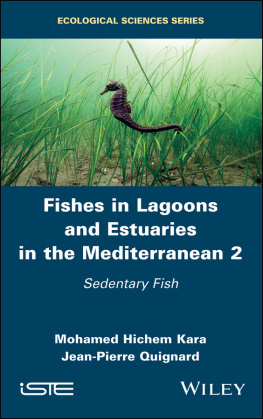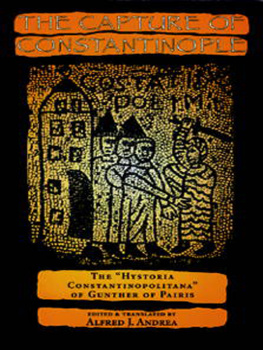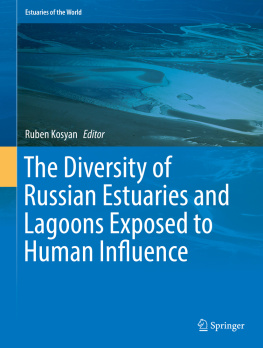
Series Editor
Franoise Gaill
Fishes in Lagoons and Estuaries in the Mediterranean 2
Sedentary Fish
Mohamed Hichem Kara
Jean-Pierre Quignard

First published 2019 in Great Britain and the United States by ISTE Ltd and John Wiley & Sons, Inc.
Apart from any fair dealing for the purposes of research or private study, or criticism or review, as permitted under the Copyright, Designs and Patents Act 1988, this publication may only be reproduced, stored or transmitted, in any form or by any means, with the prior permission in writing of the publishers, or in the case of reprographic reproduction in accordance with the terms and licenses issued by the CLA. Enquiries concerning reproduction outside these terms should be sent to the publishers at the undermentioned address:
ISTE Ltd
2737 St Georges Road
London SW19 4EU
UK
www.iste.co.uk
John Wiley & Sons, Inc.
111 River Street
Hoboken, NJ 07030
USA
www.wiley.com
ISTE Ltd 2019
The rights of Mohamed Hichem Kara and Jean-Pierre Quignard to be identified as the authors of this work have been asserted by them in accordance with the Copyright, Designs and Patents Act 1988.
Library of Congress Control Number: 2018956910
British Library Cataloguing-in-Publication Data
A CIP record for this book is available from the British Library
ISBN 978-1-78630-245-8
Foreword
Lagoons, deltas and estuaries are by definition transition zones and represent a distinctive element of the Mediterranean shoreline. In days of old, people used to come here to catch an abundance of fish, and this coastal fishing practiced behind the shoreline in the channels of the salt marshes and in the estuary mouths was at that time more highly prized than fishing in the open sea. Nowadays, although lagoon fishing represents only a small fraction of annual fish catches in the Mediterranean, estuarine and lagoon habitats continue to play a major role, be it as nurseries or in supporting an often-intensive mariculture, such as in Egypt, Italy and Greece.
This academic publication, patiently compiled by two eminent ichthyologists who are familiar with both shores, covers in three volumes the ichthyofauna of 303 lagoons and estuaries in the Mediterranean region, from the coastline of the Alboran Sea to Anatolia. Volume 1 outlines the vast geographical, geomorphological, hydrological, physicochemical and also historic diversity of Mediterranean lagoons, a diversity that has led to marked differences in the biology, reproduction, genetics, feeding and behavior of lagoon fishes.
Further, the reader will find illustrated descriptions of 47 lagoon and estuarine species that have been studied, with a detailed discussion of systematics and of issues relating to biogeography, reproductive and feeding strategies, genetics and biodiversity. Throughout this work, a distinction is drawn between sedentary and migratory species those that come and go each year between the lagoons where they find refuge, and the sea where they reproduce. However, the dividing line between these two worlds can sometimes be tenuous, and the authors introduce many central issues that remain unresolved, relating to, for instance, the genetic differentiation and adaptation (or preadaptation) between migratory and sedentary stocks, or the respective contributions made to the local fisheries by the lagoon nurseries and the marine shore area. The ichthyofauna of the studied sites is remarkably discrete: of the 249 species inventoried in 45 representative estuaries and lagoons, it will be noted that only 15 are found in 50% or more of the studied sites.
In the face of increasing anthropic pressures on the Mediterranean coast, already weakened by concrete urban development and its pathogenic wastes, by erosion, climate change, industrial and agricultural discharges into the sea, irresponsible mass tourism and the arrival of invasive Indo-Pacific species, the conservation and sustainable management of these areas and of lagoon fishing take on a certain urgency. The authors consider these topics at some length; their views are invaluable, drawn from their long experience in the field; I hope that many practitioners will find inspiration in them.
Because of the variety and expert knowledge of the themes covered, its extensive bibliography and illustrations, this work is sure to become indispensable to the technicians and managers involved in fisheries and Mediterranean aquaculture. On a wider level, it will interest the many students and researchers working in ichthyology.
Frdric BRIAND
Director General
CIESM Mediterranean Science Commission
Preface
The conservation of the natural and economic heritage represented by Mediterranean lagoons and estuaries and the associated adjacent areas (wetlands, reed beds, sansouires and salt marshes) calls for an in-depth scientific knowledge of the past and present state and the functioning of these environments, and particularly of their plant and animal components. It is on this basis that appropriate management policies can be formulated.
Classed as transition zones between land and sea, these special ecosystems are matters of concern for both scientists and managers. The former group has accumulated significant knowledge of their abiotic characteristics and their functioning. They are now investigating the individuality of the resident populations, their interactions with the adjoining ecosystems and their future in the context of climate change. The latter group is seeking scientific and technical tools that will enable them to use these environments to their full potential, taking into account the increasing anthropic pressures.
In this book, divided into three stand-alone, complementary volumes, we have brought together scientific knowledge amassed over nearly two centuries on the fishes of the Mediterranean lagoons and estuaries. This summary has been compiled from documents published in local and international reviews and in general or specialized bioecological works on pure and applied ichthyology. We are, however, conscious that an entire fringe of works concerning lagoon and estuarine fishes has been omitted, this being the gray literature consisting of expert reports, academic projects and theses, etc.
The first volume, entitled Diversity, Bioecology and Exploitation, is a non-exhaustive approach to the characteristics of lagoons and estuaries, from a geo-geographical, hydrological and general bioecological viewpoint, and also looking at the ecophysiology and behavior of the fishes that live there. The general features of the exploitation and management of fish resources are also considered.
The second volume, Sedentary Fish, is devoted to the fishes that are so named because, being very euryvalent, they live out their entire lifecycle inside lagoons and estuaries. These fishes are not all specific to these environments; some have their counterparts in the sea or in fresh water.
The third volume, Migratory Fishes, is concerned with fishes that, after spending time in lagoons, are obliged to return to their native marine or river environment to complete their lifecycle (genesic migrations), the physicochemical conditions in lagoons and estuaries (temperature, salinity, turbidity, etc.) being incompatible with the water properties required for their reproduction. Strictly hydroclimatic events can also be at the origin of migratory journeys.
Next page













